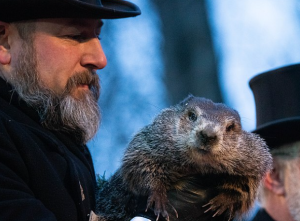Rich in state history, Phil also brings in the money
February 2, 2023
To modern society, Groundhog Day may seem like a pointless, silly tradition, but the holiday is rich in Pennsylvania history.
According to CNN, the groundhog tradition, introduced by Dutch settlers, dates back to 1887. Groundhog Day was originally a Christian holiday called Yoder, which celebrates the “turning point” of the year.
However, the introduction of animal meteorology began when German immigrants settled in Pennsylvania. Some of the early Germans viewed the groundhog as a “Candlemas weather prophet.” Thus, the legend of Punxsutawney Phil was born.
The popularization of the holiday, however, really took off with the 1993 romantic comedy, Groundhog Day, starring comedian Bill Murray and actress Andie MacDowell. The movie follows the life of an egotistical weatherman, Phil, who repeatedly experiences Groundhog Day until he gets everything right.
The film proved to be a booming success, earning 94 percent on Rotten Tomatoes.
After the film, several renditions of Punxsutawney Phil sprouted all over the globe. Now, Balzac Billy from Balzac, Canada, Fred la Marmotte in Montreal, and Buckeye Chuck of Marion, Ohio, among hundreds of other groundhogs, predict the season’s future.
Not only did Punxsutawney Phil gain national fame, but the town of Punxsutawney experienced commercial success. In a WTAE report, Punxsutawney Chamber of Commerce President Katie Laska said the holiday boosts the town’s economy exponentially.
“We have 6,000 people that live here, and it swells to 20,000 or 30,000. You can just imagine the impact that it has on our economy here,” Laska said.
Although Punxsutawney Phil’s predictions may only have a 39 percent accuracy rate, the spirit of Groundhog Day ensures a sense of community and renewal – even if Phil declares that winter will persevere for six more weeks.



